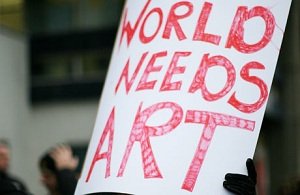
Is It Effective?
But leaving moral viewpoint aside, let’s ask ourselves: is government funding for the arts even effective in any way?
Let’s look at two different approaches to the problem. European countries traditionally do a lot of income redistribution, and they don’t leave out arts as well, pumping astounding sums of money into various grants every year, regulating their activity and supporting artists. The practice of governmental funding exists in the United States as well, but at a much smaller scale. However, the USA compensates for it the usual way – by means of private enterprise. Charitable tax deduction, while not funding the arts directly, provides great incentives for businesses and individuals to support non-profit organizations – the ones dealing with the arts included.
Also, let’s not forget about another, age-old way of supporting arts: by voting for what is really good with your dollar. Yes, most of arts funding in the USA comes from private sectors: in the form of bought tickets and donations. And the amounts received this way are much higher than what European countries give their artists by means of taking tax money and giving it directly to the artists.
Is It Stable?
Another catch of government funding for the arts is that it is extremely precarious thing to base your arts career on. Practice shows that in times of economic crises arts spending becomes one of the first things government tries to save on. As a result, people, organizations and entire industries which are not used to funding for themselves face very grim prospects: aside from the government, nobody is really interested in them.
So what are the main characteristics of governmental funding for the arts?
- It doesn’t actually help artists progress – what is the worth of art if nobody wants to support it voluntarily?
- It may disappear at any moment, once the country faces economic problems.
- It is simply less effective in generating financial support than private sector.
Recent economic recession hit European arts especially hard, because they are mostly supported by the government, while American non-profit organizations mostly managed to survive it quite well. The reason is simple – when you redistribute income by force, people are much less eager to do charity on their own.
This was an example of the essay on Government Funding for the Arts, written by our professional essay writers. To buy an essay on the necessary topic, please, fill in the Free Inquiry form in the top right corner of this page.
